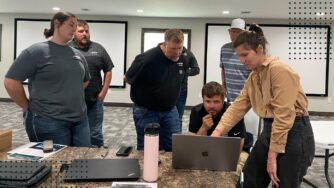The behavior of farmland is complicated because it’s not simply about historical yield, type of soil, and weather conditions. We often think of a field as a single unit. Still, in reality, every field has variability: differences in soil type, texture, and slope mean that different parts of the field show obvious differences in yield.
To deeply understand a field, we need to know how these parts perform relative to each other. Farmers and land operators are familiar with all the intricacies of the fields they cultivate. But for anyone else (such as a potential buyer or leasor), detailed information can be hard to find. However, when assessing a piece of land’s potential, having this detailed information is much more valuable than simply knowing the historical yield.
At CIBO, our technology relies on advanced machine learning and computer vision. The algorithm uses remotely sensed imagery to provide a detailed map showing the relative performance of different regions within a parcel. We call this a Performance Zones map.
The algorithm also produces a score that helps compare this information across parcels and assess the risk associated with farming a new piece of farmland. We call this a Stability Score.
A Performance Zones map is a way to break up a parcel of farmland into different zones based on historical productivity. Land operators often use the performance zones map for their land as a validation tool, comparing its conclusions against their personal assessment of the field. But perhaps the biggest benefit of this product is the insight it provides for new, unfamiliar fields.
Remote sensing technology allows us to gather yield data for every field in the US and avoid the daunting task it would require without this type of technology.
Download the whitepaper



